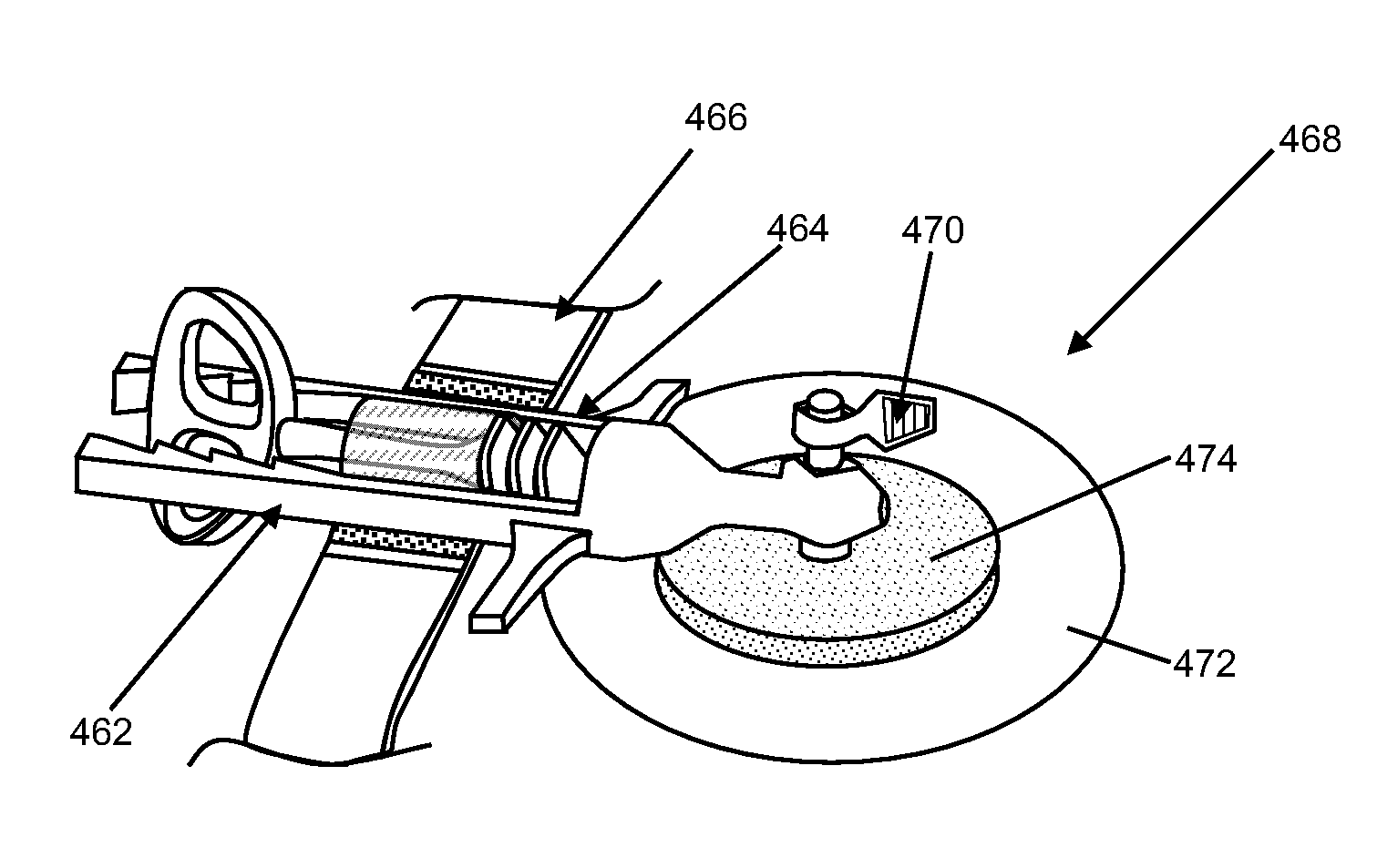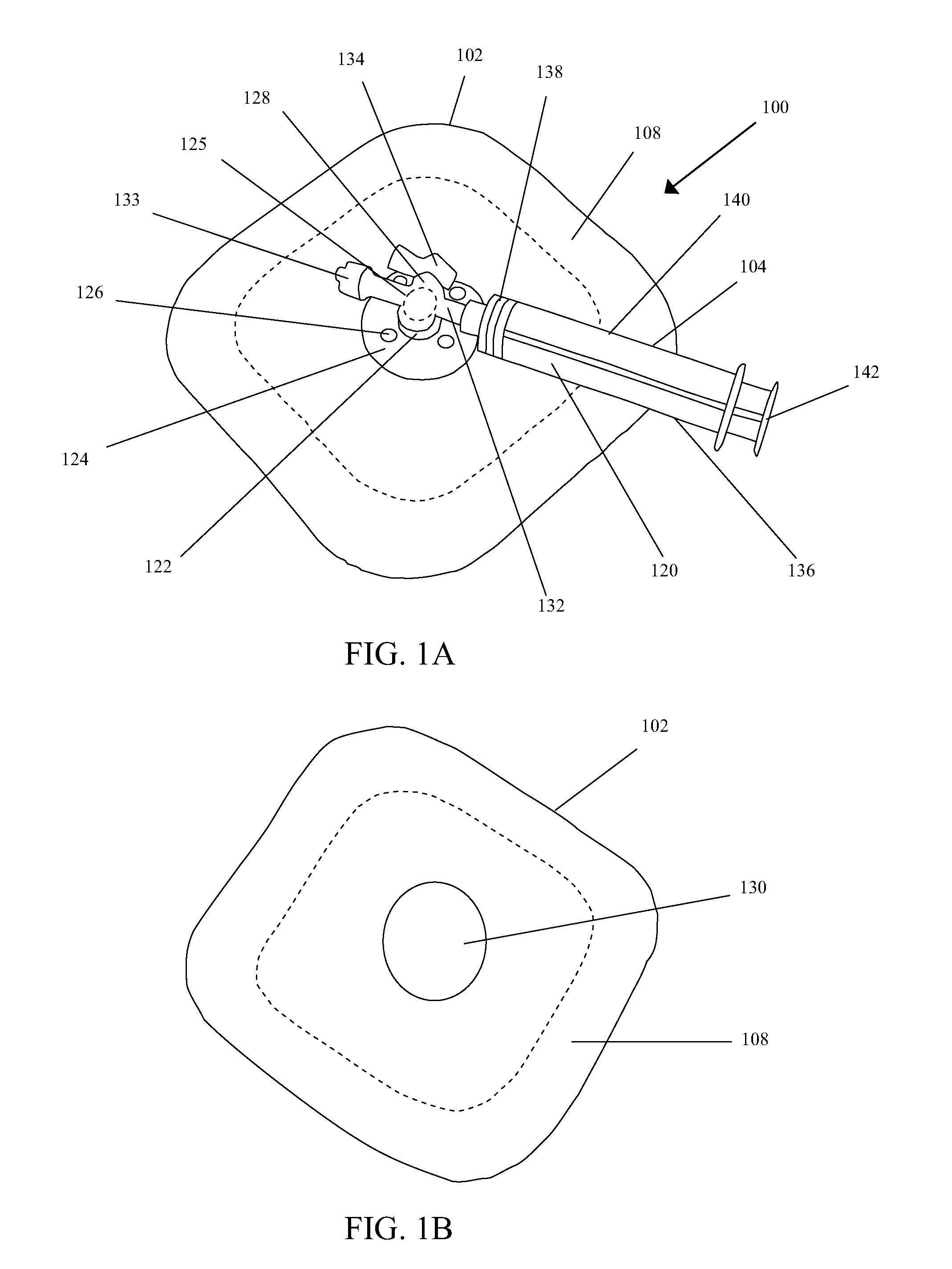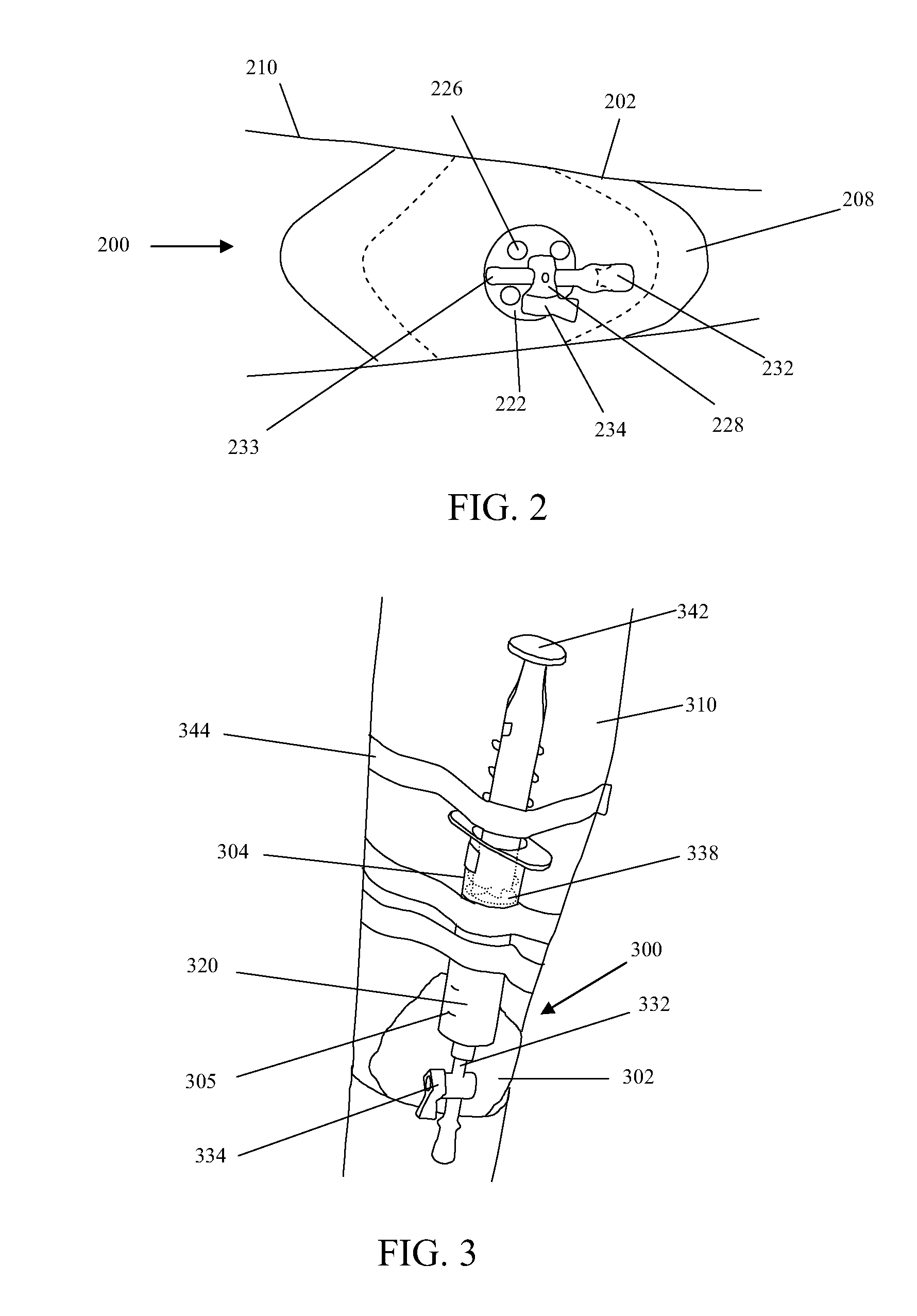Methods for application of reduced pressure therapy
a technology of reduced pressure and therapy, applied in the field of wound therapy devices, can solve the problems of non-electrical power of the suction apparatus, and achieve the effects of reducing the pressure under the sealing layer, and reducing the density of air molecules
- Summary
- Abstract
- Description
- Claims
- Application Information
AI Technical Summary
Benefits of technology
Problems solved by technology
Method used
Image
Examples
Embodiment Construction
[0042]Current negative pressure wound therapy (NPWT) systems use large, electrically driven mechanical pumps to deliver negative pressure to the treatment site. These pumps, however, limit a patient's mobility, requiring that the patient be connected to the system as well as a bulky power source throughout the course of treatment. NPWT is also very expensive, with the pump accounting for the majority of the costs.
[0043]Described generally herein are devices adapted and configured to provide reduced pressure to an area of tissue. Application of reduced pressure to an area of tissue may be used to create a therapeutic effect. In one embodiment what is described herein is a tissue therapy device. The device may be used to treat areas of tissue to which damage has occurred. In other embodiments the device may be used on non-damaged tissue.
[0044]In one embodiment, the tissue therapy device comprises a sealant layer and a suction apparatus. The sealant layer creates a seal around an area ...
PUM
 Login to View More
Login to View More Abstract
Description
Claims
Application Information
 Login to View More
Login to View More - R&D
- Intellectual Property
- Life Sciences
- Materials
- Tech Scout
- Unparalleled Data Quality
- Higher Quality Content
- 60% Fewer Hallucinations
Browse by: Latest US Patents, China's latest patents, Technical Efficacy Thesaurus, Application Domain, Technology Topic, Popular Technical Reports.
© 2025 PatSnap. All rights reserved.Legal|Privacy policy|Modern Slavery Act Transparency Statement|Sitemap|About US| Contact US: help@patsnap.com



